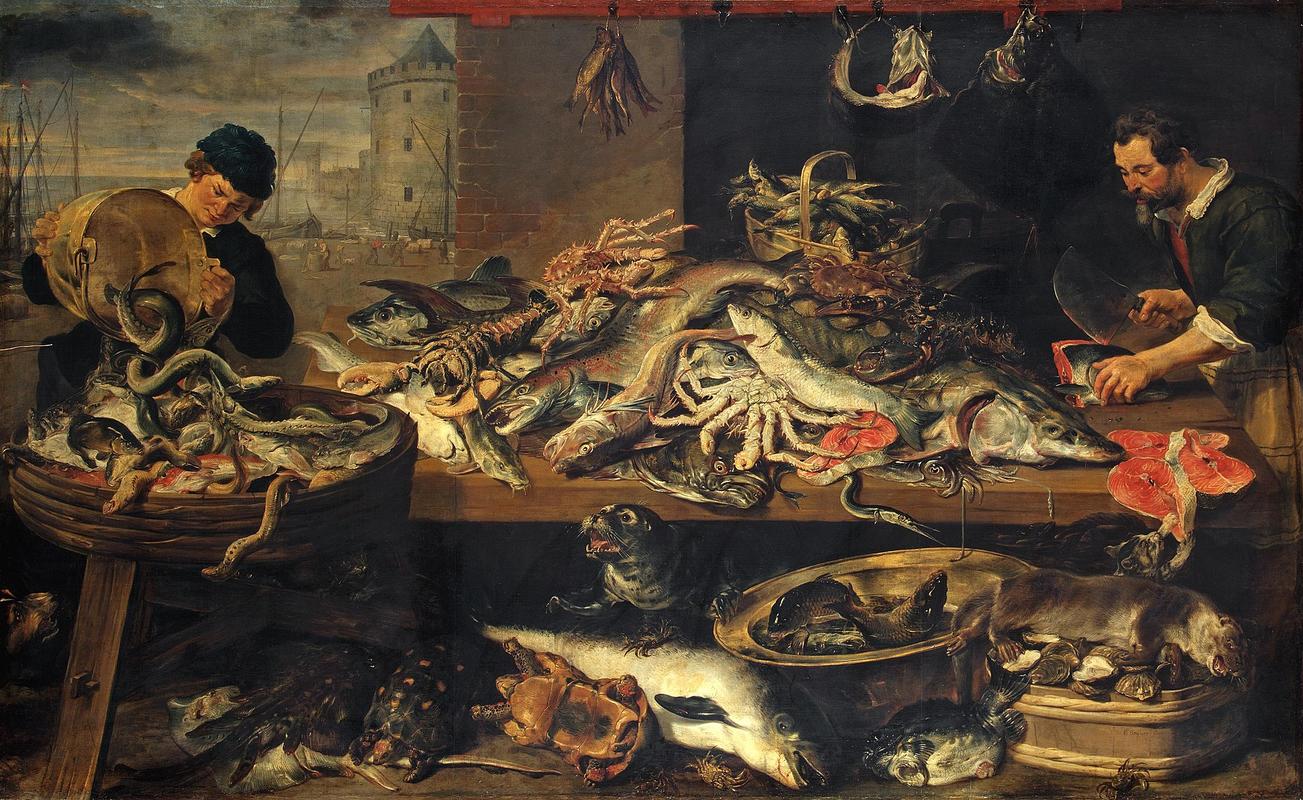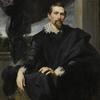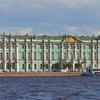More about Fish Market

Contributor
Painting animals is a long standing tradition in the visual arts, and plenty of painters have made a career out of depicting our favorite furry creatures.
Frans Snyders was a precursor to animal painters Edwin Henry Landseer and Rosa Bonheur. Moreover, plenty of painters have made a career out of getting weird and painting dead animals, like George Stubbs. However no one has taken the art of painting dead animals to the sheer heights that Frans Snyders achieved in his lifetime.
Snyders was known as the king of still life art during the 17th century. Finding fame even before settling into the style he would become known for, he became the Master of the Antwerp Painters Guild and in 1608. However, at the time his work was quite a bit different from this picture. During the beginning of his career he was known for painting more mainstream still life art, producing paintings of what one could only assume to be the fruitiest fruits, the floweriest flowers, and bowliest bowls.
What is interesting is that Snyders' work would grow to become both more alive and more dead. He would stick to “still life” his entire career, however for him the term would gradually come to have an almost ironic connotation, as there was very little that was “still” about Snyders' work. Piles of dead animals, waiting to be consumed or taxidermied, seem to quiver on the tables of his market stall and kitchen scenes in anticipation of their fate. As a friend and business partner to Peter Paul Rubens, Snyders incorporated the famed flemish artist’s Baroque style to his own. He heightened the dramatic elements of his pictures, a skill that was most prominent when applied to particularly morbid subject matter, like a market stall of dead fish. The carcasses lay strewn across a surface, some hacked to pieces while others are still writhing and wriggling. Meanwhile, live animals like a seal and dog pick their way through the scene, creating a dynamic contrast between the living and dead. Snyders was so good at producing this sort of thing that often Rubens would hire him out to paint the animals in his work. Because of this, people would often confuse their pieces. However, when Rubens was praised for Snyders' work he would often refute them and set the record straight, saying that no one could depict dead animals better than Snyders.
These abundant market scenes would have been appealing for a number of reasons. They show off Snyders' skill at portraying a variety of creatures and rendering their different textures in paint. This would have made them fantastic feasts for the eye and conversation pieces. It has also often been suggested that these scenes of abundance were propagandistic in nature, promoting a vision of a prosperous Flanders. Flanders was under the rule of the Spanish Hapsburgs at the time, while the Northern Low Countries had just broken off after a long revolt and were now their own Protestant domain. It is thought that paintings like these, brimming with the food and resources indicative of a bustling economy, were meant to validate Spanish rule and emphasize its superiority over their Northern neighbors.
Sources
- Depoorter. Matthias “Frans Snyders” Baroque in the Southern Netherlands viewed on 03/31/2020 https://barokinvlaanderen.vlaamsekunstcollectie.be/en/artist/frans-snij…
- Web Contributor “Frans Snyders” Encycopidia of Old Master Painters viewed on 03/31/2020 http://www.visual-arts-cork.com/old-masters/frans-snyders.htm
- Web Contributor “Frans Snyders” Getty Museum viewed on 03/31/2020 http://www.getty.edu/art/collection/artists/311/frans-snyders-flemish-1…











